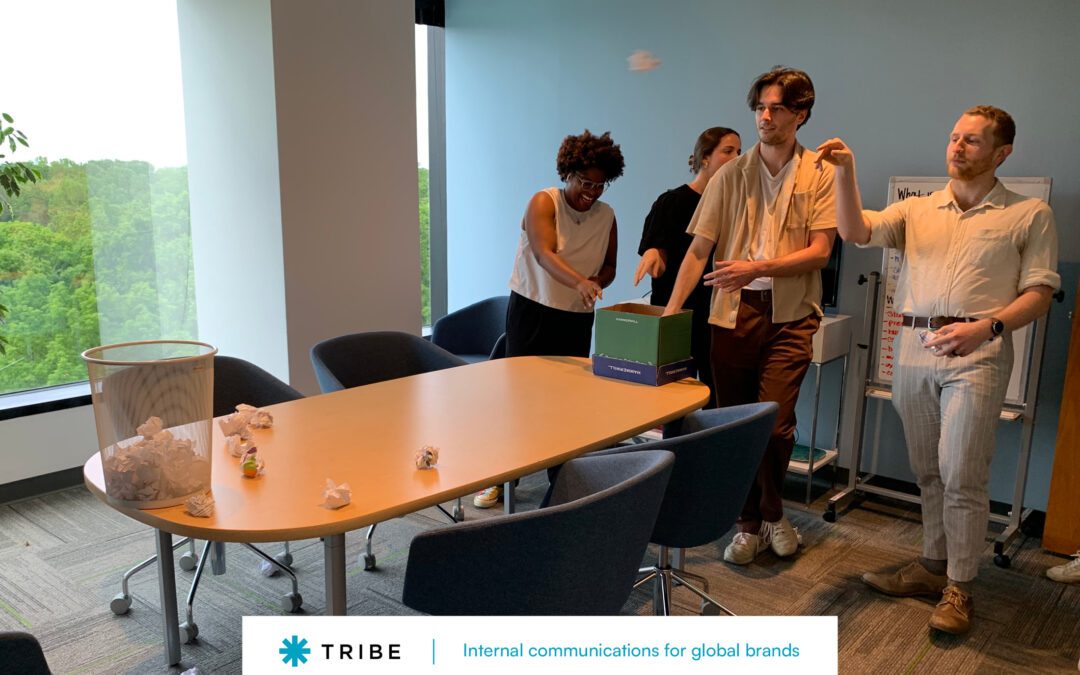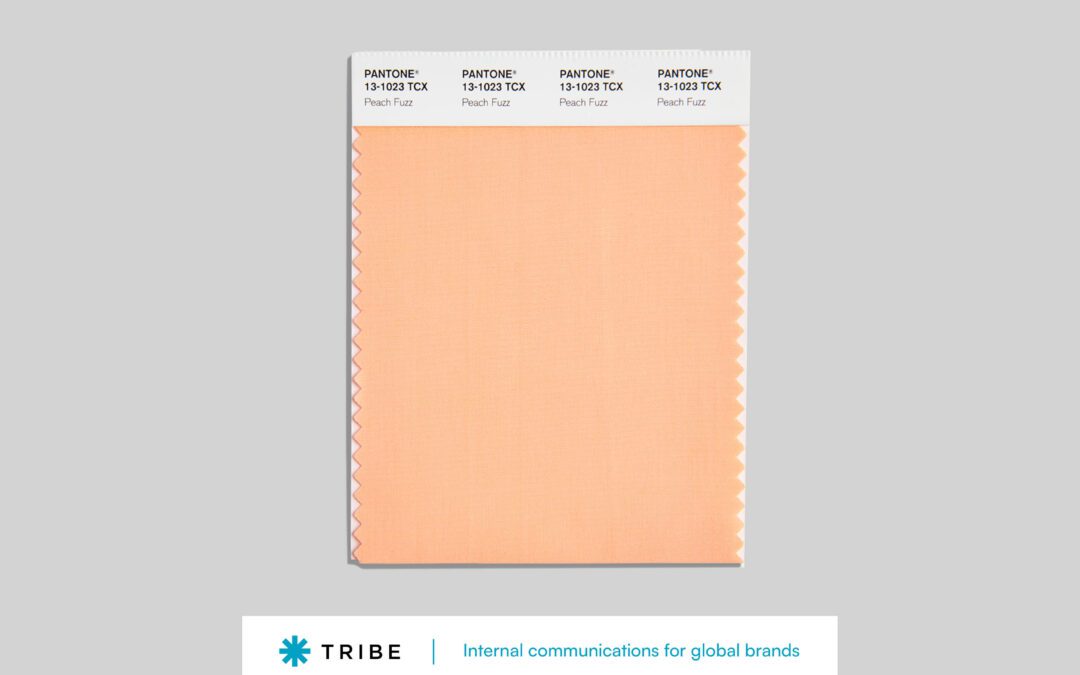When Pantone announced Peach Fuzz 13-1023 as their Color of the Year for 2024, they described it as a “a velvety gentle peach tone whose all-embracing spirit enriches mind, body, and soul.” Leatrice Eiseman, Executive Director of the Pantone Institute says, “In seeking a hue that echoes our innate yearning for closeness and connection, we chose a color radiant with warmth and modern elegance. A shade that resonates with compassion, offers a tactile embrace, and effortlessly bridges the youthful with the timeless.”
THAT’S A LOT FOR ONE COLOR TO PULL OFF
My first reaction was that Peach Fuzz wasn’t a great color for employee communications, but I couldn’t put my finger on why. It felt dated to me, like a South Florida spa in the 1980s, decorated in this peachy tone with teal accents. But there was something more that felt off.
Then one of our account managers at Tribe said Peach Fuzz reminded him of the Crayola color called Flesh that was his childhood’s go-to hue when coloring white people’s faces. Bingo! That’s why it’s not a good fit for internal communications or employer brands, because it feels like a reversal of the progress we’ve made towards recognizing diversity in our workplaces and promoting more inclusivity — of all colors of skin, as well as of other differences.
CRAYOLA’S REVISIONIST HISTORY?
I remember the Flesh colored crayon when I was a kid, which was a number of decades before this account manager’s coloring book days. I wondered if that color still existed in the Crayola box, but a quick Google took us to Crayola.com which claims the color was discontinued in 1962, replaced by Peach. I’m old but I’m not that old, and this account manager is a solid Gen Z.
If you’re looking for a rabbit hole on the topic, just open the Reddit thread titled “Flesh colored crayons,” where you’ll find a spirited debate on the decades in which the Flesh color was still manufactured by Crayola — and whether the 1962 claim is an example of the Mandela Effect or a misguided PR tactic. Adults of all ages seem to remember using the Flesh crayon in the 1970s, 1980s and even 1990s.
OTHER NAYSAYERS
In any case, whenever it was that Crayola changed the name of that crayon from Flesh to Peach, it didn’t stop the connotations of skin. 13-year-old Bellen Woodard was in the third grade when she noticed the issue. “The problem was that people were calling the peach crayon the skin color crayon,” she said. “My mom told me to hand them the brown crayon next time.” Bellen was inspired by the experience to launch More than Peach, an art supply company offering crayons in a wide range of skin tones. (My favorite part of her site is that she’s called the World’s First Crayon Activist.)
Some grownups see the same issue with Peach Fuzz. In a New York Times article documenting a Styles team conversation, Callie Holtermann mentioned that the color seemed a reversal of the progress the cosmetics industry has made towards a more inclusive palette of complexions. “This color, plus the skin connotation of the Peach Fuzz name, hews pretty closely to the shades worn by white people that there are no shortage of.”
BARBIE PINK
Speaking of flesh color, Pantone seemed to predict Barbie mania with their 2023 color of the year, Viva Magenta. And we’ve certainly incorporated other Pantone Colors of the Years in client palettes for internal communications, including 2020’s Classic Blue, 2021’s Ultimate Gray and Illuminating Yellow and even 2022’s Veri Peri. But Peach Fuzz is not likely to be the new color for employer brands in 2024. At least, we hope not.
Interested in building your company’s employer brand or improving your employee communications? Tribe can help.










